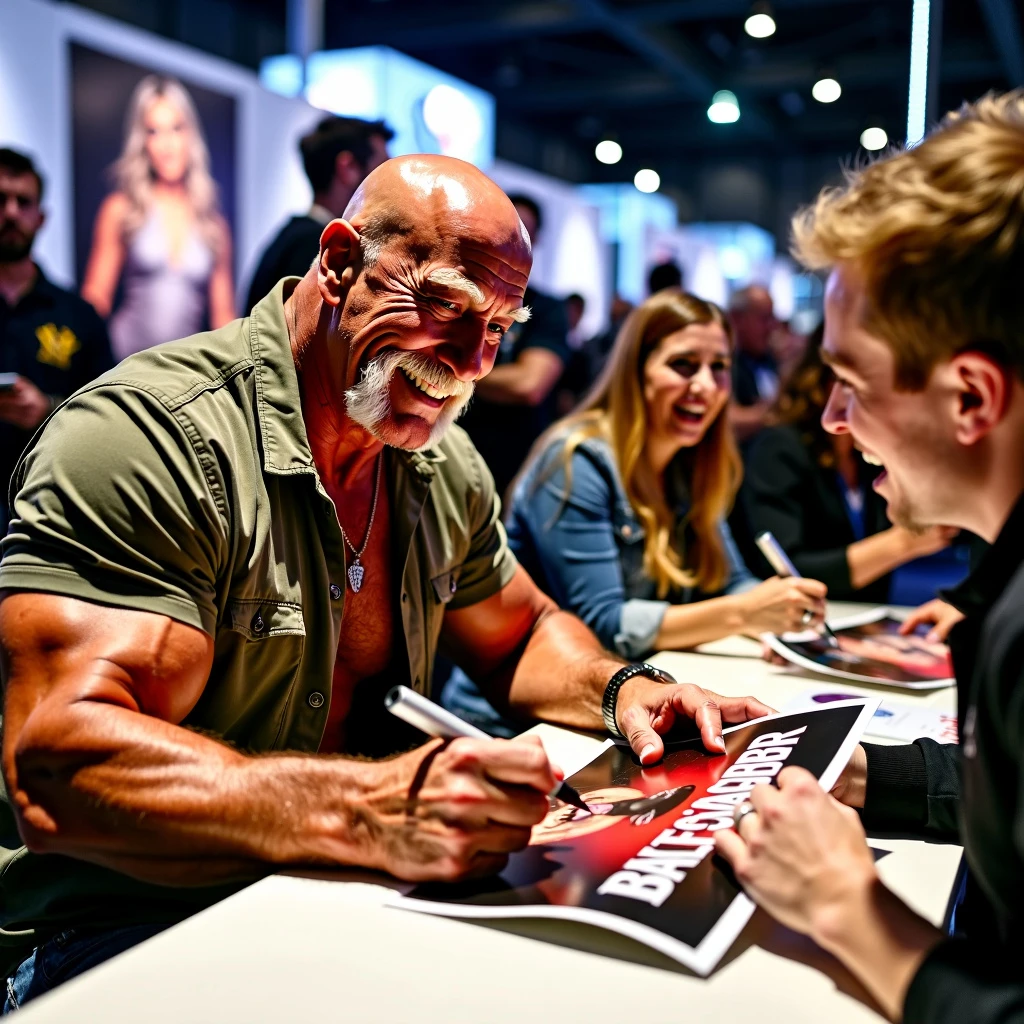In the photo, Hulk Hogan is seen signing autographs on an A4- sized *Backstabber* film poster for an enthusiastic fan. Hogan is seated at a table, wearing a casual yet stylish outfit, with a warm and engaging smile on his face. He is holding a silver marker, carefully signing his name on the poster. The fan, who appears excited and appreciative, is holding the poster eagerly, waiting for Hogan to finish. The fan is dressed casually and seems to be soaking in the moment, possibly wearing *Backstabber* merchandise or memorabilia. The background is bustling with other fans and promotional displays for the film. The atmosphere is lively and celebratory, with the poster prominently featuring the film’s title and dramatic artwork. The photo captures a genuine moment of connection between Hogan and his fans, highlighting the personal touch and excitement surrounding the film’s release























